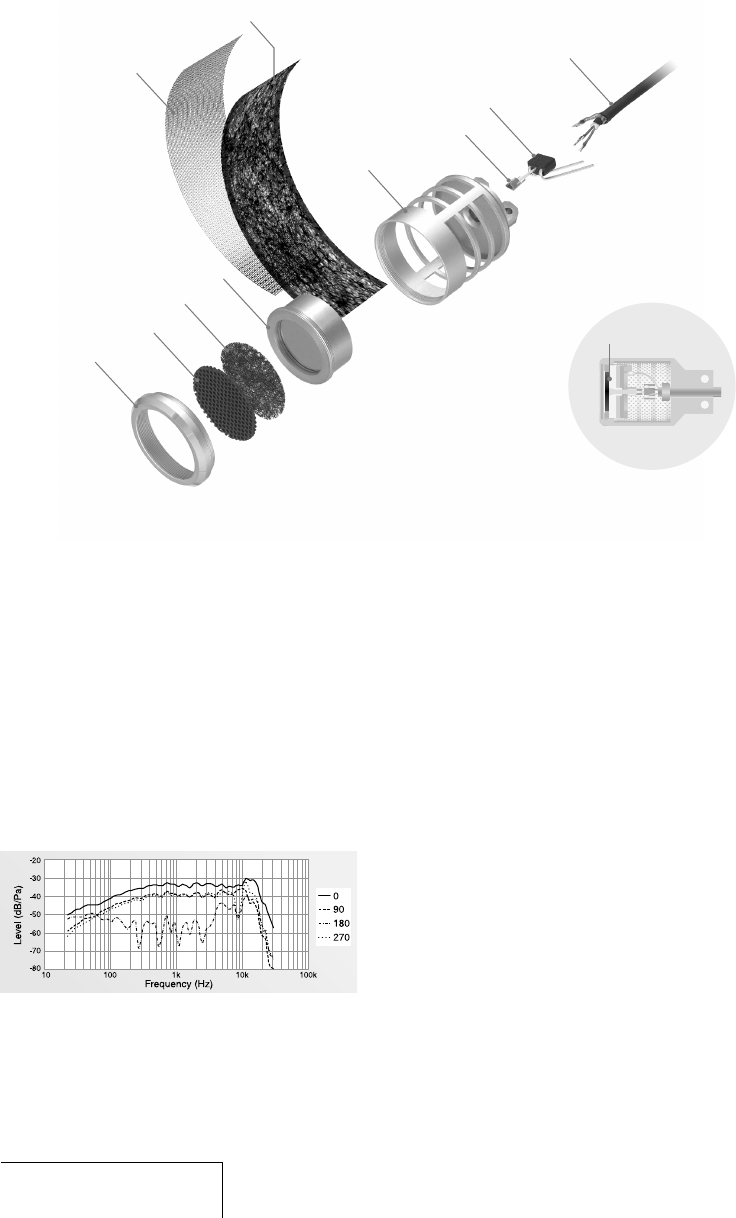
Overview (continued)
Built-in microphones
—
Pick up sound
PCM-D1 incorporates electret condenser
microphones that were developed for their
high sensitivity and low noise. Unlike tape or
disc recorders, PCM-D1 has no drive
mechanism and is free of motor noise. This
makes it possible to employ a highly sensitive
microphone to be used as a component.
All microphone casing parts are cut from
metal and fit together nearly seamlessly.
Each part is positioned and the front and
rear openings are adjusted with 100-micron
level precision. Peaks and dips in the
microphone’s range are minimized so that
Section view of microphone
Figure 1: Built-in microphone, frequency
response
Cap
Front grill
Top screen
Microphone unit
Side mesh
Side screen
Microphone casing
Contactor
FET
Microphone cord
Diaphragm
acoustic energy is transmitted effectively to
the diaphragm in the microphone unit.
To ensure that sound is then converted to
electrical signals, the conditions for
manufacturing the electret (charging the
diaphragm to increase sensitivity to subtle
sounds) were reviewed—resulting in a
sensitivity nearly 6 dB superior to that of a
standard microphone.
In addition, the frequency response of the
microphone is improved to nearly –30 kHz,
achieving a sampling rate of 96 kHz
(Figure 1). This performance is barely
affected even when the supplied windscreen
is used.
The microphones are positioned using the X-
Y pattern and then angled toward each other
with the left and right diaphragms close
together, thereby covering a wide sound
range and reducing phase shifts. The
recorded sound has depth and perspective
and projects a natural stereo image.
Angle
10
PCM-D1. US. 2-664-971-11(1)


















